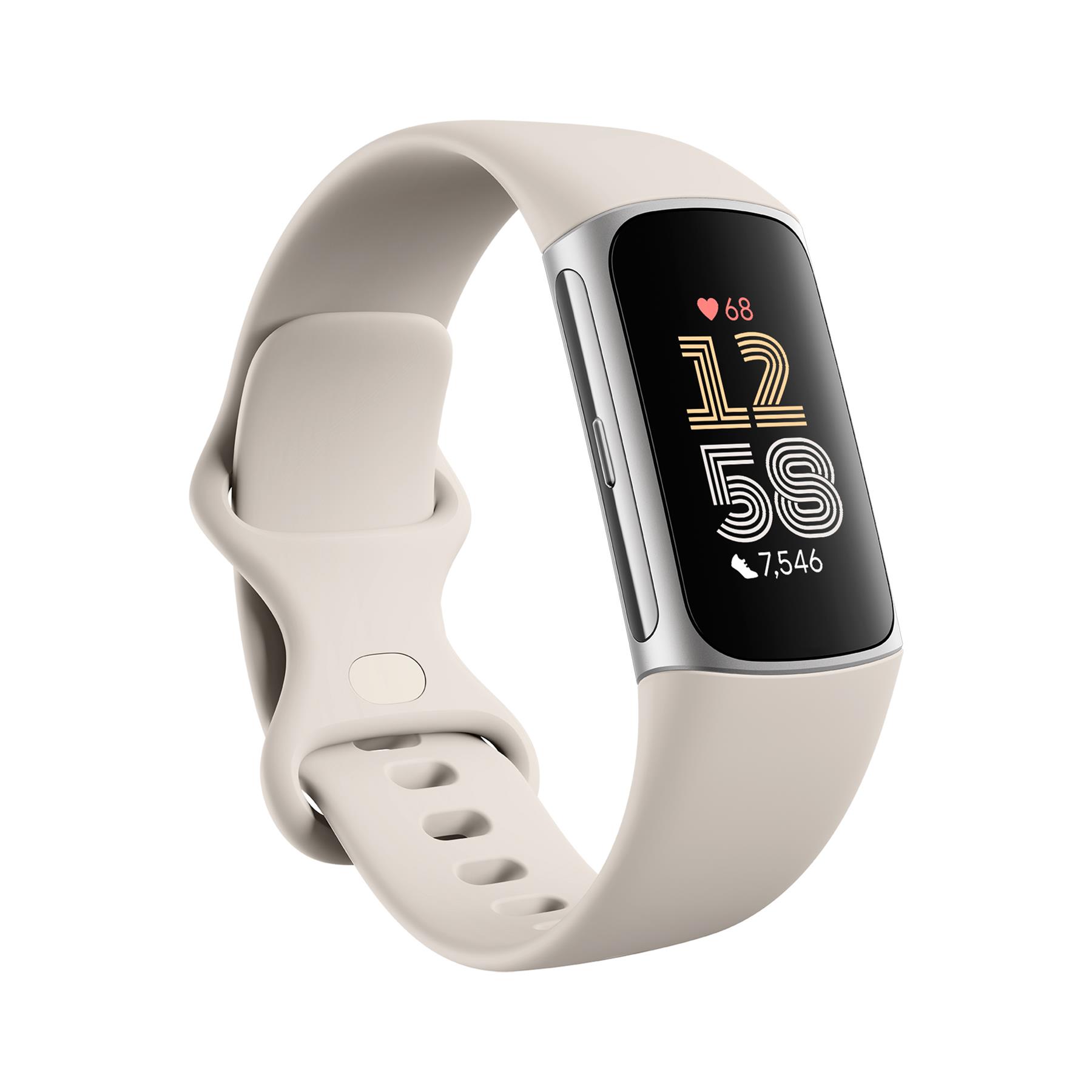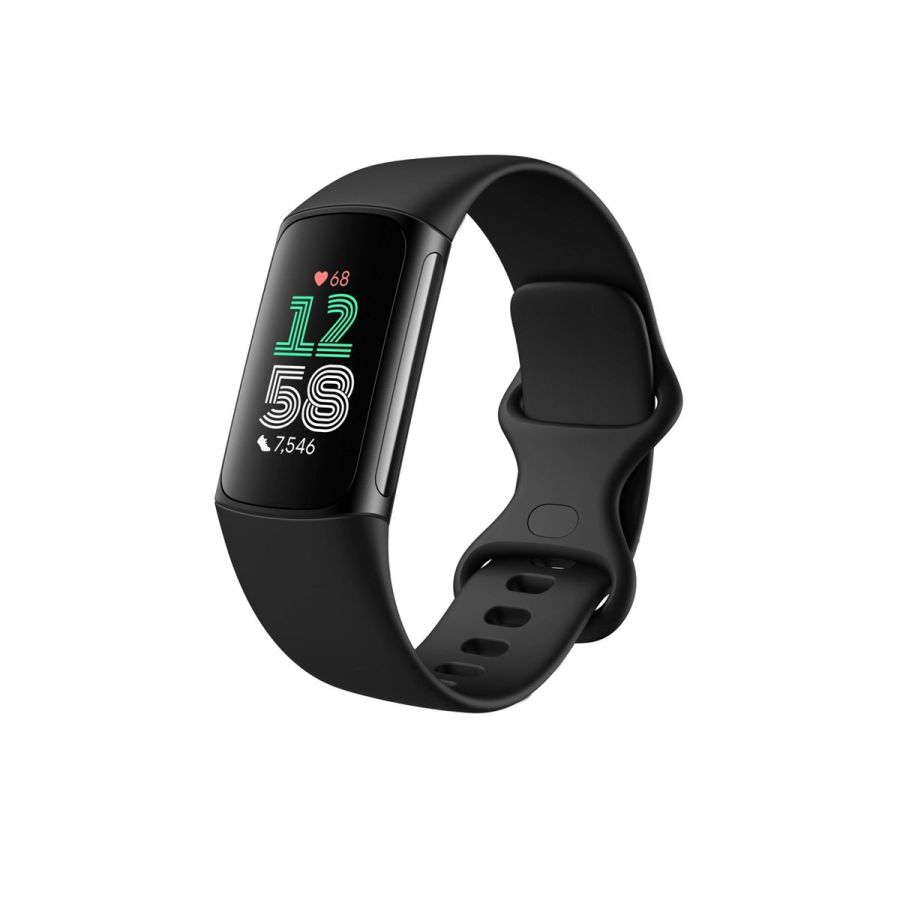The Fitbit Charge 6 steps into the fitness tracker arena with a host of features and a sleek design, but does it meet the high expectations set by its predecessors? Tech expert and qualified PT Lee Bell explores its capabilities to see if it’s the right fit for your workout- and health-tracking needs.
The Fitbit Charge 6 is yet another contender in the bustling fitness tracker market. Affordably priced, this sleek device is designed to be a comprehensive tool for health and fitness monitoring. Its goal? To merge the convenience of a fitness band and workout tracker (test it out against our full-body dumbbell workout), with the added capabilities of a smartwatch.
With features like heart rate monitoring, sleep tracking and new integrations like Google Maps and Google Wallet, the Charge 6 promises a balance of functionality and innovation. But does it deliver on these promises?
Men’s Fitness verdict
The Charge 6 is a solid choice for those focused on health and wellness tracking, but it’s less suitable for serious athletes or outdoor sports enthusiasts due to its GPS and HR tracking issues.- Feature-rich for a fitness band
- Integration with Google apps
- Comfortable, light and sleek design
- Compatible with HR streaming on Peloton, NordicTrack and Tonal
- Excellent sleep tracking
- GPS issues, not so reliable for tracking outdoor activities
- Lacks an altimeter for elevation tracking
- Lacks an altimeter for elevation tracking Requires Fitbit Premium for full feature access
How we test fitness trackers
Lee Bell is an experienced product reviewer and fitness enthusiast. He tested the Fitbit Charge 6 for a period of two months towards the end of 2023 and early 2024.

Setup
The Fitbit Charge 6 arrives ready to slip straight into your daily routine and, thankfully, the setup process is pretty straightforward and hassle-free. Simply unbox the device, charge it and connect it to the Fitbit app on your smartphone. You’ll need a Google account, of course, but the intuitive interface guides you through a quick configuration, ensuring it’s ready to track your movements without any annoying tweaks to make.
Design and first impressions
The first thing you’ll notice about the Fitbit Charge 6 is its sleek, modern design. Marrying aesthetics with functionality, the compact wearable sports a streamlined, band-style design that’s relatively harmless in terms of looks, making it suitable for everyday wear. The device’s lightweight and compact build also means it sits comfortably on the wrist for long periods, blending in nicely with both workout gear and casual attire.
This latest iteration in the Charge series features an aluminium case and a high-resolution AMOLED touchscreen display, offering crisp visuals and responsive touch controls. The screen is also pretty bright, meaning it can be read in various lighting conditions.
The newest design addition in the Charge 6, however, is the tactile side button – something that was missing in its predecessor. This button makes operating the wearable so much easier, simplifying navigation and providing quick access to the tracker’s features and settings. It’s a certainly welcome addition, especially since it addresses the usability concerns of previous models, which relied solely on touch gestures.
In terms of colour options, the Fitbit Charge 6 offers a slew of options to suit personal preferences. Each variant is designed with a colour-coordinated, durable silicone band that feels comfortable on the wrist. It’s also adjustable and can be switched out easily, with many different options to choose from on fitbit.com.
Performance and features
In terms of performance, the Fitbit Charge 6 offers a decent balance between fitness-tracking capabilities and everyday use. The thing you’ve got to be clear about when considering a purchase of this wearable, though, is that it’s designed and optimised for more passive monitoring, excelling in areas like step counting, sleep tracking and continuous heart rate monitoring. When it comes to the more extreme, dedicated sports stuff, it doesn’t really hit the mark, but more on that later.
One of the most impressive features of the Fitbit Charge 6 is its dedicated sports tracking options. For starters, the wearable has over 40 exercise modes, such as HIIT, rowing, strength training and pool swimming. It also boasts Auto Workout Tracking, which works well. This is basically when the Charge 6 automatically starts logging walks and runs without you needing to tell it to start recording.
Another standout feature in the Charge 6 is its sleep tracking capability, which Fitbit is renowned for. The tracker offers detailed insights into sleep patterns, including sleep stages and estimated oxygen variation. This data is crucial for users looking to understand and improve their sleep quality and I found it to be really insightful, matching up with the Withings Sleep Analyser that sits under my mattress almost perfectly.
For those more dedicated to their fitness, the Charge 6’s built-in GPS is a key selling point, though in experience it did show some inconsistencies in connectivity, especially during high-intensity workouts like our home dumbbell HIIT workout. That could be seen as a massive drawback for serious runners or outdoor athletes who rely heavily on precise GPS tracking.
The heart rate monitoring of the Charge 6 is generally reliable, however, with only occasional discrepancies during certain activities. In my tests, it worked well for moderate exercises and gym workouts, offering useful feedback on heart rate zones and exertion levels. However, for activities that required quick changes in heart rate or high-intensity interval training, the tracker sometimes struggled to keep up with rapid fluctuations.
Despite these minor issues, the overall performance of the Fitbit Charge 6 is impressive, especially considering its size and price point. It strikes a good balance between being a fitness tracker and an all-day wearable, catering to a wide range of user needs. The main thing to keep note of, however, is that this wearable is probably best suited to those who aren’t super serious about fitness and only occasionally dip their toes into more high-intensity stuff. For that, you might want to consider a Garmin or Polar device.
How does it compare?
It’s fair to say that the Fitbit Charge 6 stands out among competitors in the competitive landscape of fitness trackers, especially when compared with its predecessor, the Charge 5. While it boasts the signature features of the Charge 5, including a sleek design and robust health tracking, the Charge 6 is slightly more intuitive thanks to the reintroduction of a physical button.
However, when compared to devices like the Garmin Venu or Apple Watch, the Charge 6 falls short in terms of GPS reliability and its sports tracking features. Sure, it’s a great choice for general health monitoring, but less so for intense sports enthusiasts.
How could the Fitbit Charge 6 be improved?
The Fitbit Charge 6 could benefit from some improvements in a few key areas, especially when it comes to enhancing user experience. First, resolving the GPS connectivity issues would help boost its appeal to outdoor fitness enthusiasts since accurate and reliable GPS tracking is a critical feature for runners and cyclists. Secondly, incorporating an altimeter for elevation tracking would provide a more holistic view of physical activities, especially for those engaging in hiking or stair climbing.
Lastly, improving the heart rate sensor’s responsiveness during high-intensity workouts would likely make the Charge 6 more appealing to users who prefer to engage in varied fitness routines, ensuring accurate tracking across all types of exercise.
Is the Fitbit Charge 6 worth buying?
The Fitbit Charge 6, despite its flaws, remains a solid choice for those focused on health and wellness tracking. It’s less suitable for serious athletes or outdoor sports enthusiasts due to its GPS and heart rate tracking issues. If you’re seeking a reliable fitness band with smart features and excellent sleep tracking, the Charge 6 is a worthy consideration.
However, if your focus is more on specialised activities like marathon training or if you prefer a device with a larger display and more advanced metrics, you might want to consider other options like the Garmin Forerunner series.
Fitbit Charge 6 technical specs
| Display | AMOLED |
| Brightness | 450 nits |
| Display size | 1.04inches (diameter) |
| Connectivity | Bluetooth 5.0 |
| Weight | 31g |







